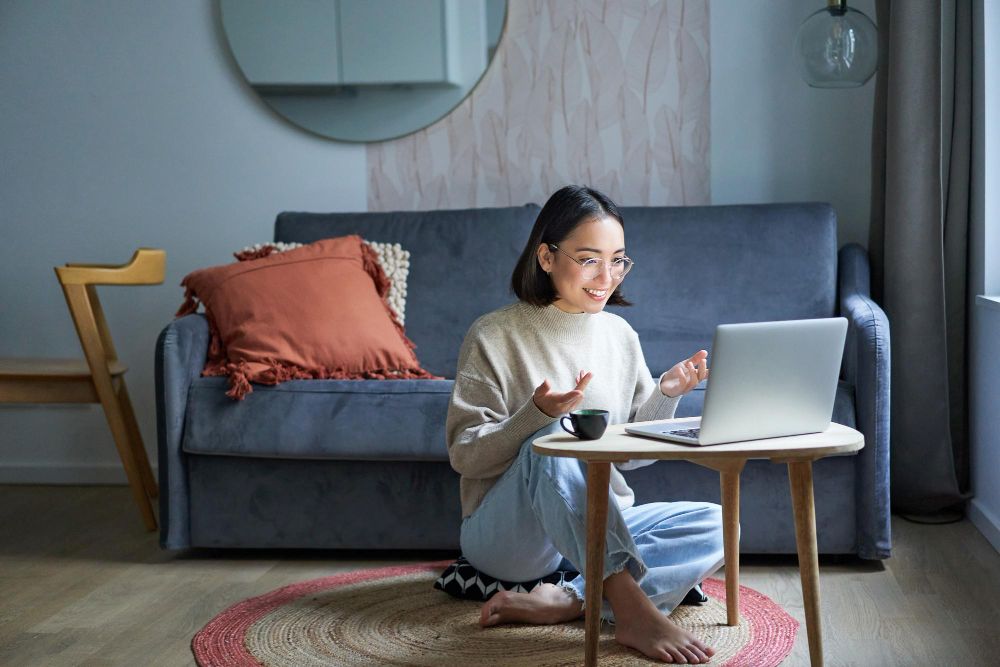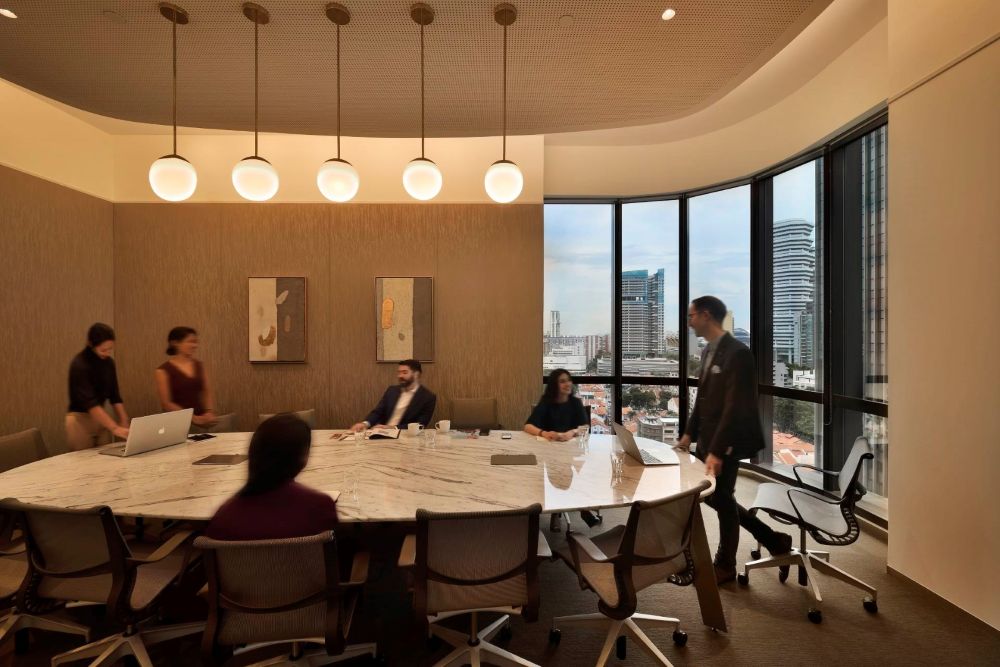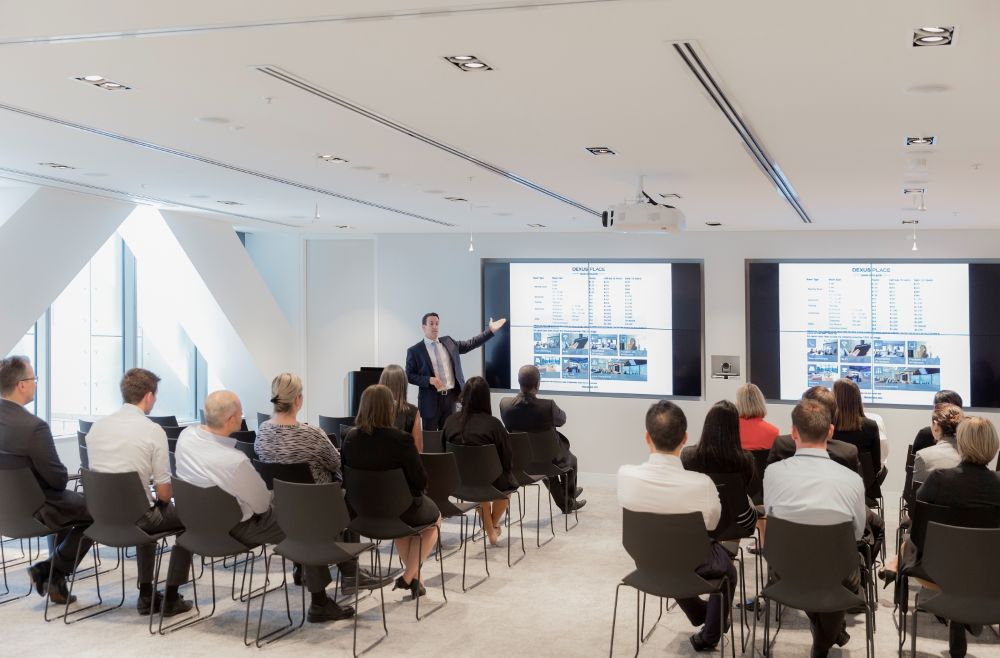The modern workspace is more than just desks and chairs – it's a productivity engine intricately designed to enhance focus, collaboration, and employee well-being.
Gone are the days when office design was an afterthought. In the modern age, businesses understand that every element of their workspace can directly impact performance. From the lighting that illuminates the room to the materials used in the furniture, each detail is carefully selected to create a working environment that promotes efficiency and creativity.
But what exactly makes an office a "productivity engine"? The answer lies in a combination of design elements that work together to support different types of work, foster a positive company culture, and address the needs of a diverse workforce. Let’s explore certain aspects of office interior design and layout that have an outsized impact on efficiency and employee motivation.

TWP Coworking Offices at Capita Spring Singapore
Creating Spaces That Cater to Different Workstyles
A key aspect of modern office design is flexibility to suit different individuals across diverse roles. Employees often have varying workstyles—some thrive in collaborative environments, while others need quiet, focused areas to do their best work. A workspace layout modelled for productivity offers a variety of spaces that cater to different needs.
Collaborative areas, such as open-plan layouts and breakout rooms, encourage teamwork and brainstorming. These spaces are designed to be dynamic and adaptable, with furniture that can be rearranged to suit the group’s needs. On the other hand, quiet zones or private offices provide employees with distraction-free silos for tasks that require deep concentration.
The Role of Technology in Modern Workspaces
Another crucial element of the modern office is technology. Smart office designs incorporate technology in ways that streamline operations, improve communication, and reduce friction in daily tasks. For example, IoT-enabled devices can automate lighting, temperature, and even desk bookings, making it easier for employees to focus on their work.
Video conferencing tools and digital collaboration platforms have also become essential in hybrid work models, where teams are often spread across different locations. Businesses with small office layouts can also benefit by leveraging technology to ensure seamless communication between in-office and remote or Work-From-Home (WFH) employees. This lets them retain a larger workforce without additional costs.
Wellness-Centric Design: Boosting Employee Morale and Efficiency
Employee well-being is another cornerstone of a productive office design. The modern workspace doesn't just aim to improve efficiency—it also prioritises the health and well-being of employees. A thoughtful office layout incorporates ergonomically designed furniture to help prevent physical strain, while strategically placed breakout areas offer employees a space to relax and recharge during the day.
The idea of incorporating nature into office design, known as biophilic design, has also gained popularity. Studies show that exposure to natural elements, such as plants, water features, and natural light, can reduce stress and increase focus.
In Singapore, where urban greenery is a key feature of the city, businesses are rapidly embracing integrating biophilic elements into their office design. A good tip is to start with simple additions like indoor plants, which can improve air quality and create a more inviting atmosphere.
For businesses seeking a plug-and-play solution, premium coworking spaces like The Work Project offer an attractive alternative with move-in-ready private office space for rent. These spaces come fully equipped with ergonomic furniture and optimised office designs, eliminating the need for companies to invest time and resources in those areas.
Balancing Natural and Artificial Lighting for a Healthier Office Space
Lighting plays a pivotal role in creating a comfortable and energising office space. Striking the right balance between natural and artificial light is essential for creating an office design that supports employees' daily activities.
The Importance of Natural Light
Natural light is one of the most important elements in any office design. Exposure to sunlight during the day has been shown to boost mood, increase energy levels, and even regulate circadian rhythms, which improves sleep quality.
Incorporating large windows, skylights, or glass partitions is an effective way to maximise natural light. Positioning desks and workstations near windows ensures employees benefit from the sun's natural brightness throughout the day. Not only does this improve visibility, but it also reduces the need for artificial lighting during daylight hours, cutting down on energy costs.
Complementing with Artificial Office Lighting
While natural light is ideal, it’s not always sufficient or available in all areas of the office. That’s where artificial lighting comes in. The goal of artificial lighting should be to complement natural light without creating harsh contrasts or overly bright areas. By carefully planning artificial light sources, offices can maintain a well-lit environment that feels cohesive and supportive of different tasks.
The Future of Office Spaces: Adaptability and Innovation
As work models continue to change, so too must office designs. The future of office spaces lies in adaptability and innovation. Modular office designs—where walls, furniture, and layouts can be easily reconfigured—will allow businesses to adapt to changing work patterns without the need for constant renovations. This flexibility will enable businesses to create collaborative zones for team projects one day and private spaces for focused work the next, all within the same office space.
Office Design: A Strategic Investment in Productivity and Well-Being
In a city known for its competitive business environment and high office rental prices, Singaporean companies cannot afford to overlook the impact of good office design. By prioritising adaptability, sustainability, and the needs of their workforce, companies can create workspaces that facilitate peak performance.
However, for companies seeking to reduce costs associated with high-end offices, alternative solutions exist. Coworking spaces like The Work Project offer private workspaces for rent in Singapore, providing a cost-effective way to access well-designed, highly productive environments. This approach not only decreases overheads but also grants employees access to shared amenities and a thriving professional community.
With offices located in prime business districts across Singapore, The Work Project offers a range of flexible leases for shared offices. Reach out to us today to book a tour and see first-hand our approach to sophisticated and productive office design.






